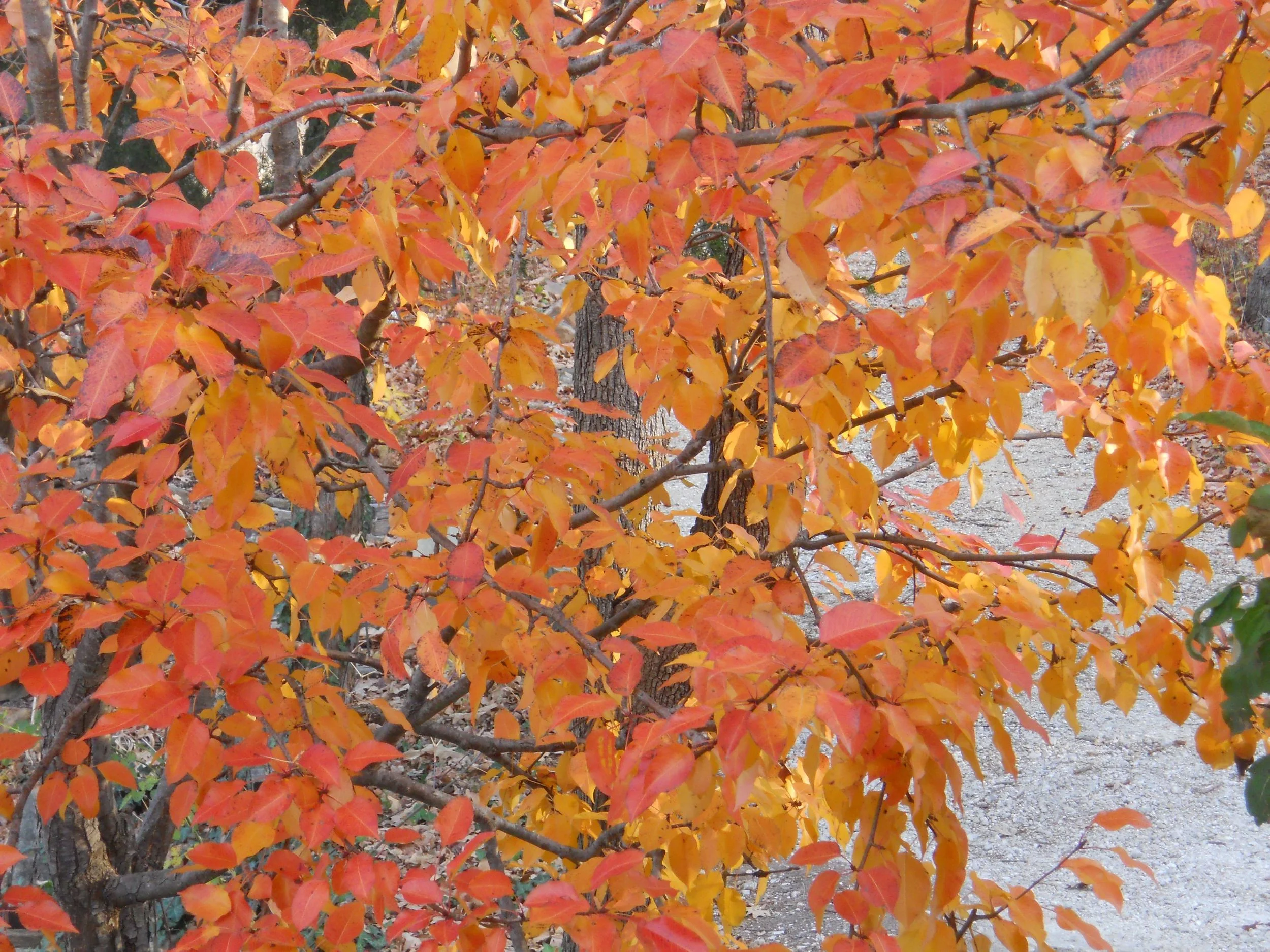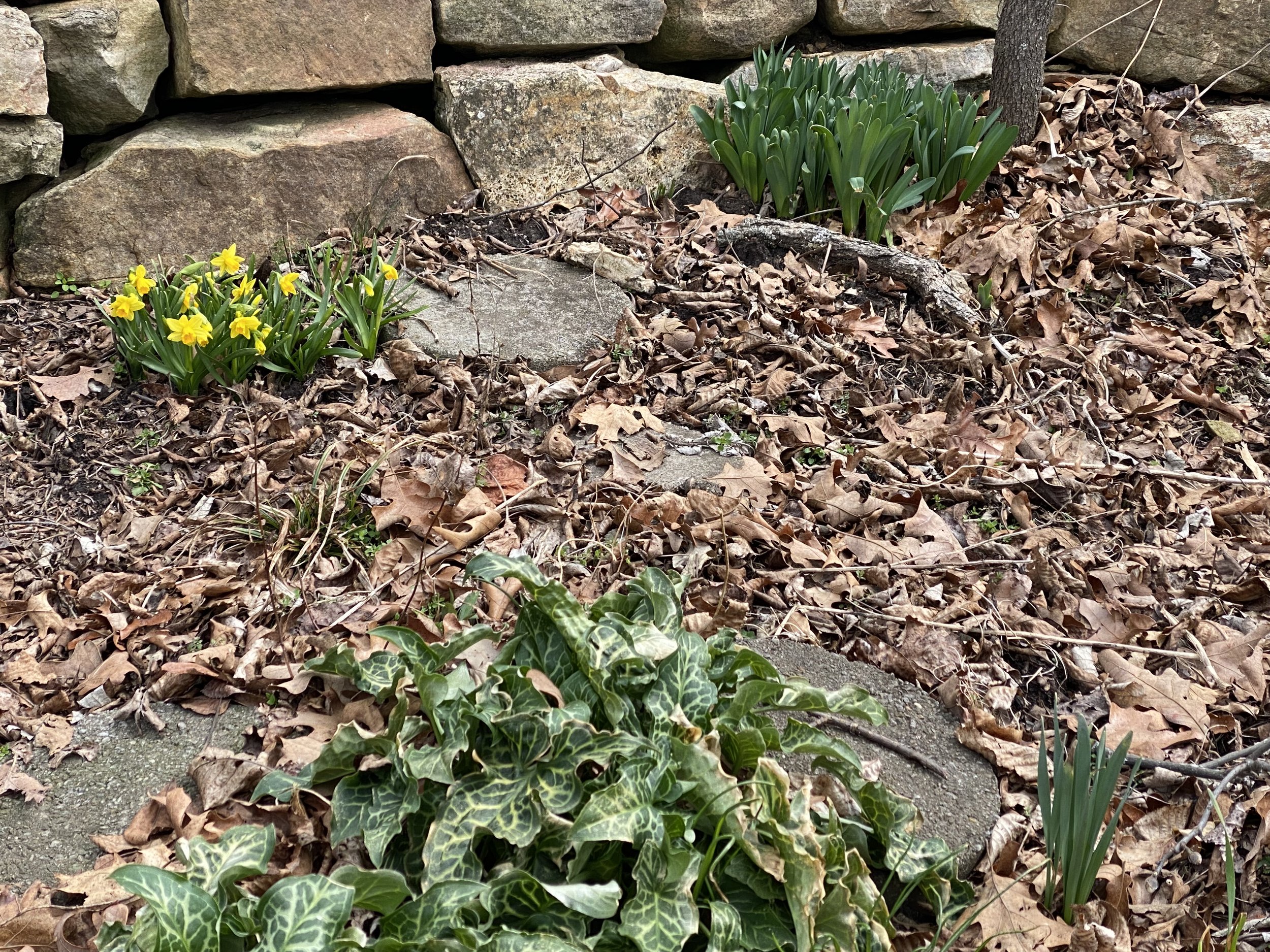Planting Bulbs for Spring Flowers
/tete-a-tete daffodils, lefft, are among the early blooming spring daffodils. (charlotte ekker wiggins photo)
Planting Bulbs for Spring Flowers
The bulb packages are starting to show up at local home and garden centers so time to check my notes from spring. Not that it's very helpful since I scatter spring-flowering bulbs through my garden but at least this year I tried to identify areas where I can add more.
Planting spring bulbs in the fall allows them to establish roots before cold weather sets in. Some bulbs such as tulips also need to be exposed to cold for 8-12 weeks or they won't bloom.
Here are some favorite spring bulbs to plant in fall, along with tips for successful planting:
1. Tulips: Tulips come in a wide range of colors and shapes, making them a popular choice for spring gardens. They are also edible and a favorite food source for deer. In USDA Hardiness zone 5, tulips are annuals, only growing one year.
When planting tulips, follow these tips:
Choose a sunny location with well-drained soil.
Plant tulip bulbs about 6 to 8 inches deep, with the pointed end facing up.
Space the bulbs a few inches apart, considering the eventual size of the tulip plants.
Water thoroughly after planting to help settle the soil and eliminate air pockets.
After they bloom, try not to water the area or the moisture will cause dormant bulbs to rot.
2. Daffodils (Narcissus): Daffodils are known for their vibrant yellow and white blooms, often with a sweet fragrance. My neighbors call my hillside garden "daffodil land" because I have them growing all over my hillside.
Here's how to plant them:
Select a sunny to partially shaded spot with good drainage.
Plant daffodil bulbs about 6 inches deep, with the pointed end up.
Space them apart according to the variety, usually a few inches.
Daffodils are generally low-maintenance and deer-resistant.
3. Crocuses: Crocuses are some of the earliest bloomers, bringing pops of color to your garden in late winter to early spring. The bulbs are favorite mouse food so don't be surprised if you loose some before they bloom.
Here's how to plant crocus bulbs:
Choose a spot with well-draining soil and partial to full sun.
Plant crocus bulbs about 3 to 4 inches deep, with the pointed end facing up.
Space them close together for a dense carpet of color.
Crocuses naturalize well, which means they'll multiply over the years.
4. Grape Hyacinths: Grape Hyacinths are a favorite for bees and naturalize once established.
To plant grape hyacinth bulbs:
Pick a sunny location with well-drained soil.
Plant hyacinth bulbs about 6 inches deep, with the pointed end up.
Space them a few inches apart, considering the eventual size of the plants.
Water after planting to settle the soil and encourage root growth.
5. Alliums: Alliums, often referred to as ornamental onions, offer unique spherical blooms that add architectural interest to gardens.
Plant allium bulbs as follows:
Choose a sunny location with well-drained soil.
Plant allium bulbs about 6 to 8 inches deep, with the pointed end up.
Space them apart according to the specific variety.
Alliums are known for their deer and rodent resistance.
Tips for Successful Planting:
Prepare the soil by adding compost or well-rotted organic matter to improve drainage and fertility.
Plant bulbs with the pointed ends facing upwards and follow recommended planting depths for each type.
Water bulbs after planting to help settle the soil and initiate root growth.
Mulch the planted area to help conserve moisture and regulate soil temperature.
Consider grouping bulbs together for a more impactful display of color.
Protect newly planted bulbs from pests like squirrels by covering the planting area with wire mesh.
Be mindful of the recommended hardiness zone for each bulb type to ensure they can survive your winter temperatures.
Charlotte












